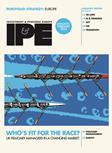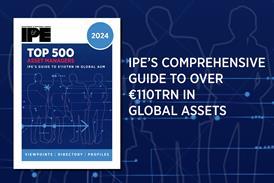Pensions in Central and Eastern Europe Report
In-depth reporting and analysis of the pensions sector in Central and Eastern Europe for our pension fund and asset management readers from IPE’s award-winning journalists.
-
 Country Report
Country ReportPoland’s pension online dashboard takes shape
Wider access to personal financial information is a step in a good direction – but will savers appreciate it?
-
 Country Report
Country ReportFirst-pillar pension reform versus fiscal consolidation in Romania
The law reforming the first-pillar pension system could amplify fiscal deficit problems in the shorter term
-
 Country Report
Country ReportSecond-pillar pensions in Central & Eastern Europe
Assets, membership and asset allocation
-
 Country Report
Country ReportBulgaria’s pension funds look to Europe
The country’s pension sector is seeking greater flexibility in investment fund options
-
 Country Report
Country ReportCEE country report 2024: Poland’s auto-enrolment system - five years on
Slow but steady progress in auto enrolment is driving growth in workplace pension assets and membership
-
 Country Report
Country ReportCentral & Eastern Europe: Kosovo Pensions Trust’s journey to maturity
10% contribution rate is low for the Balkans and changes could be afoot
-

-
 Country Report
Country ReportCentral & Eastern Europe: Will Bulgaria seize the PEPP opportunity?
Bulgaria’s DC pension system should face up to the PEPP
-
 Country Report
Country ReportCentral & Eastern Europe: Tax breaks boost Romania’s pensions
Challenges remain as critics eye poor investment performance
-
 Country Report
Country ReportCentral & Eastern Europe: Poland’s qualified success with auto enrolment
Participation in the PPK auto-enrolment remains stable if relatively low and assets are growing steadily
-
 Country Report
Country ReportCentral & Eastern Europe: Lithuania’s growing interest in alternatives
Local funds would like to see a more diverse range of domestic investment opportunities, including through more local listings
-
 Country Report
Country ReportCountry Report – Pensions in Central & Eastern Europe (January 2023)
Poland’s PPK auto-enrolment system marks its fourth anniversary this month. It can hardly be described as a complete success given the participation rate is stuck at just over a third of the working population. Some initial projections foresaw a 70% takeup level. But with assets approaching €2.5bn and rapidly growing, there is a sense that this is a relatively good outcome for a country with no tradition of independent retirement saving and where the previous second pillar system was radically overhauled just a few years ago, leaving ordinary citizens confused and mistrustful.
-
 Country Report
Country ReportPoland’s slow start on pensions
Poland’s automatic enrolment programme continues to suffer from an endemic lack of trust
-
 Country Report
Country ReportM&A reshapes CEE pensions market
Some European insurance groups are retreating from the CEE region, while others are snapping up assets. All this is reshaping pillar-two pensions
-

-
 Country Report
Country ReportCountry Report – Pensions in Central & Eastern Europe (January 2022)
A combination of poor policy decisions and conservative asset allocations have conspired to stifle the development of supplementary pensions in the CEE region since the widespread adoption of the World Bank’s three-pillar model in the 1990s, as IPE Editor Liam Kennedy writes in this issue.
-
 Country Report
Country ReportCEE – Croatia: Real diversification
A lack of local diversification opportunities is holding back Croatian pension funds
-
 Country Report
Country ReportCEE – Romania: Funds fight through
Conservative portfolios have served Romanian pension funds well through the crisis
-
 Country Report
Country ReportCEE – Estonia: Preparing for a liquidity storm
A rule allowing early withdrawals is changing the dynamics of the Estonian pension business
-
 Country Report
Country ReportCEE – Poland: Auto-enrolment limps to the finishing line
Lack of trust underpins poor take-up of new plans





